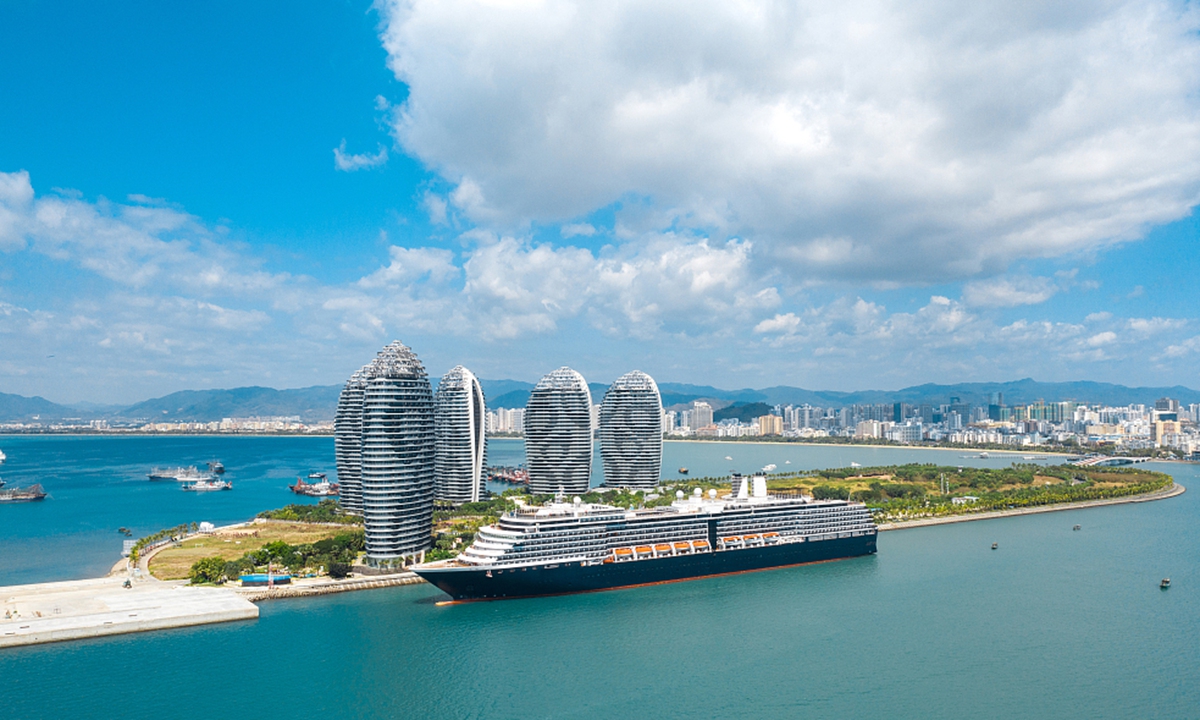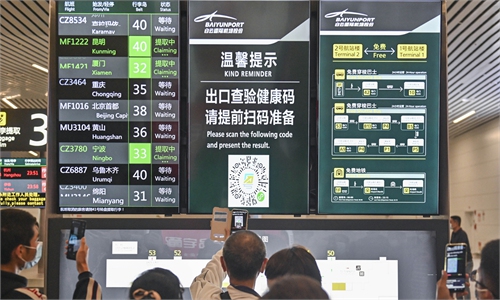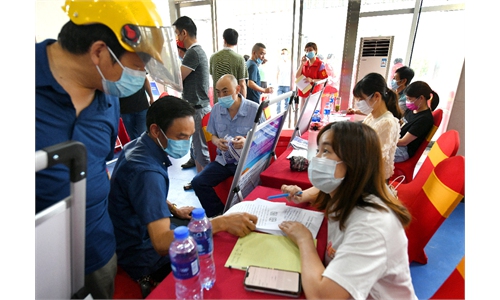Outbreak in 'Hawaii of China' Sanya likely triggered by imports through fishery trade: official

Sanya Photo: VCG
The southern Chinese city of Sanya, a premier beach destination that boasts palm-fringed, white sand beaches and clear blue waters, on Thursday launched temporary lockdown measures in many districts as the city detected 72 confirmed cases and one asymptomatic carrier within four days. With the launching of a makeshift hospital with more than 1,800 beds, experts expressed confidence that this wave of the epidemic could be curbed promptly and effectively.
Starting from Thursday, except for low-risk regions of Haitang Bay, Yalong Bay and the Yucai ecological zone, residents in other regions need to present a negative nucleic acid testing results obtained within 24 hours or a sampling record on the day (a negative record from the previous day is required) before entering public venues, residential communities and government agencies, Sanya authorities said.
For high-risk regions, people are not allowed to go out of their homes, and related delivery services will be provided, according to the authorities.
A total of 30 high-risk regions and 19 medium-risk regions were added on Thursday in the city.
This round of the epidemic was caused by an imported variant, the Omicron BA.5.1.3 strain, according to local authorities on Thursday. The central fishing port of Yazhou district was the origin of the outbreak starting on Monday, which was likely to have been imported through trading with overseas fishermen, the local authorities said during Thursday's press briefing.
Most infections are related to fishing ports, fishing boats, fishermen and fishing markets, and the number of infections is on the rise, with a possible transmission risk among communities, the authorities said.
Each community under temporary epidemic control measures should in principle have one or two entrances, and the staff should be on duty 24 hours a day. Residents can go out to purchase supplies once every two days with an entry pass or order daily supplies online.
The city has established special working groups to ensure sufficient daily supplies including rice, vegetables, frozen pork, seafood, eggs and mineral water for local residents.
A makeshift hospital with an area of 27,800 square meters in Sanya has opened with more than 1,800 beds. Epidemic prevention supplies in the hospital will be stored for 300 people for a month and replenished dynamically, authorities said on Thursday. A total of six quarantine sites with 719 rooms have started operating, according to the authorities.
The makeshift hospital had received 59 positive cases as of Thursday, and they are all in a stable condition, the authorities said.
Lu Hongzhou, head of the Third People's Hospital of Shenzhen, told the Global Times on Thursday that the flare-up in Sanya has "low-level" transmission so far, which could be curbed soon with prompt measures including timely and effective nucleic acid tests.
Hainan on Thursday issued a notice that fishermen in the province are required to complete nucleic acid testing five times a week, and report and test promptly before and after going out to the sea, as Sanya on Monday detected one confirmed local case, who is a fish vendor at a fishing port in Yazhou district in the city.
So far business is "relatively stable" and there are few cancellations, an employee surnamed Lin at a local hotel in a low-risk region of Sanya told the Global Times on Thursday.
We are "not panicked" over the epidemic as we have taken "necessary measures" including wearing face masks and disinfecting promptly, Lin said. All employees are required to take nucleic acid tests once a day, according to Lin.
A mother of two who arrived at Sanya on Wednesday told the Global Times that it's still possible to enter a hotel with a negative nucleic acid test obtained within 24 hours. But the indoor aquarium in the hotel was closed due to the epidemic, and everyone needs to wear a face mask while in the hotel.
"I have some concerns if we will be asked to stay here due to the epidemic as the rates are relatively high," she said.
Sanya on Tuesday suspended on-site services at some public cultural venues and tourist attractions to reduce the risk from COVID-19 after the city detected the Omicron BA.5.1.3 strain.
Except for public services enterprises ensuring the city's normal operations covering water, electricity, transportation, supermarkets, pharmacies, catering (only take-out services) and other related sectors, other employees are required to work at home or take leave. Other businesses have been suspended, according to the authorities.
Public transportation including buses, cruise ships and yachts has been suspended. Tourists who need to leave Sanya should present a negative nucleic acid test certificate twice within 48 hours before their departures, said the authorities.
As of 2 pm on Thursday, Sanya had scheduled a total of 428 domestic passenger flights in and out of the airport, 144 of which have operated and 79 have been cancelled, with a cancellation rate of 18 percent, according to data information provider VariFlight sent to the Global Times on Thursday.



